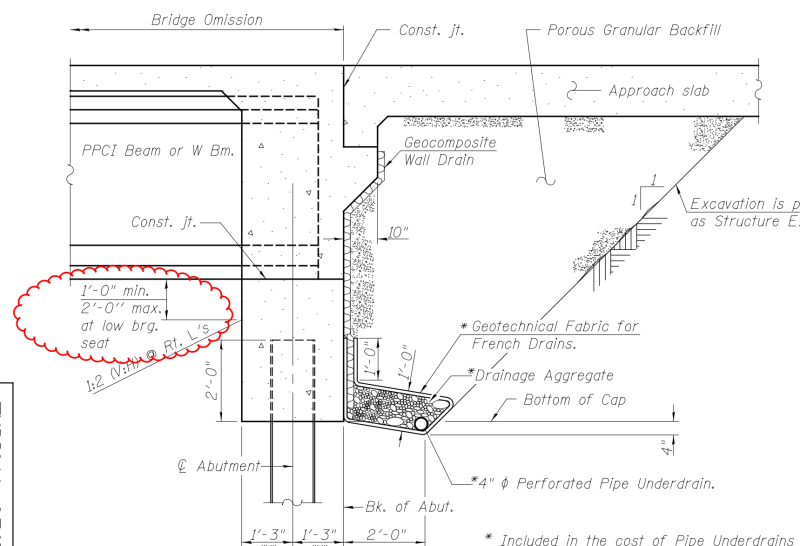When I say too long, I do not mean too long for an integral abutment. Bridges up to 600' and longer can be constructed with integral abutments. If there is more than a couple of feet between the bottom of the beam and the bridge header, you could move the abutment towards the center of the bridge and shorten the bridge. I hope that makes sense. However I could also see where hydraulics or geometric constraints might require something different.
Normal practice is to not backfill until the deck and abutment diaphragm concrete have reached a certain strength.
I have always treated the abutment as a cantilever. However when it is backfilled the abutment diaphragm and deck should already be in place and of sufficient strength. I suppose you could treat it as pinned with respect to the active or at rest soil pressure acting against it. I wouldn't treat it like that for the passive forces acting against it when the bridge expands or contracts because of where the temperature forces are acting.

